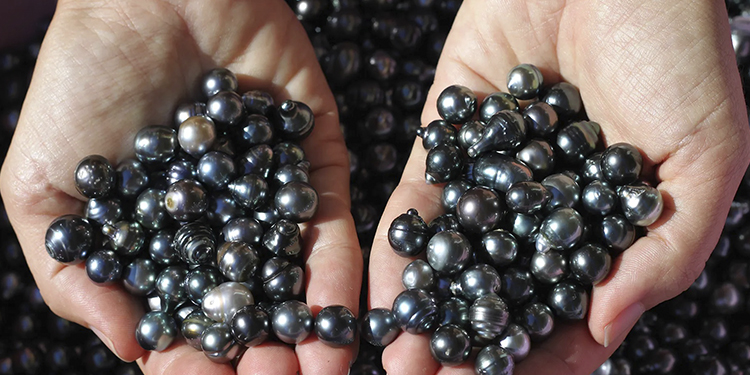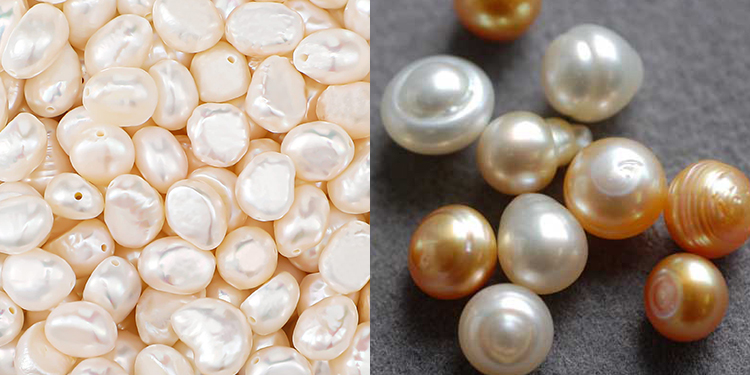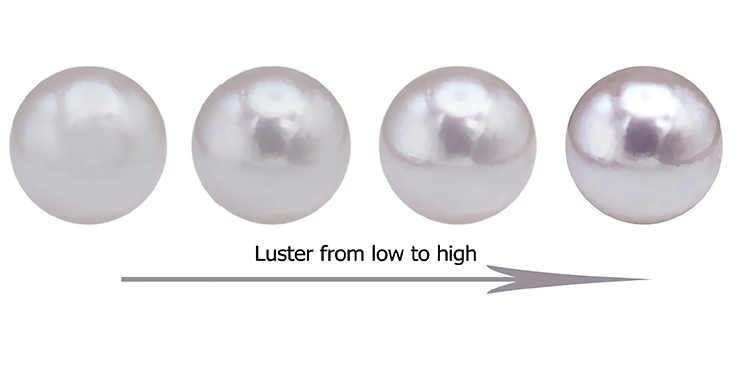7 Top Pearls Buying Tips to Avoid Pitfalls

Today, pearls are no longer exclusive to our mothers' generation; more and more young women are embracing simple and elegant pearl jewelry.
However, for newcomers to the world of pearls, the quality and prices in the pearl market can be quite bewildering.
Here, we have compiled seven tips to help you choose the right pearls.
Don't Buy Pearls Without Certification
Since pearls are not frequently bought items, most people lack the expertise to assess their quality.
To be safe when purchasing saltwater pearls, make sure to look for two certificates: the certificate of True Scientific Research and the National Gemstone Testing Center (NGTC) certificate.
Never buy high-value pearls without a certificate of True Scientific Research.

Avoid Pearls Without Luster or Weak Luster
People often say, "Luster is the soul of pearls," so when selecting pearls, the first thing to consider is their luster.
Luster is categorized as weak, medium, strong, or first-class strong. It is advisable not to choose anything lower than strong luster.
Pearls without luster appear dull, almost like dead fish eyes, making them no different from ordinary freshwater pearls.So why pay several times the price for them?
Don't Buy Pearls with too Many Flaws
As natural organic gemstones that cannot be polished later, pearls may have minor imperfections, which is normal.
Imperfections should not be a concern, especially if the pearl has excellent luster, as it can overshadow these flaws.
However, if there are too many flaws, they can obscure the luster, affecting the overall appearance and even social interactions.
Imperfections can be classified as flawless, very slight, slight, and heavy; choose pearls with slight imperfections or better.

Avoid Pearls with Thin Nacre
Pearls with thin nacre are prone to show "blink and peel" issues (meaning they lose their luster quickly).
What's worse, if not properly maintained, they can easily lose their nucleus, making them unsuitable for long-term collection.
Pearls with thick nacre can maintain their luster for a long time.
Don't Buy Pearls with Unattractive Overtone Colors
Pearls with beautiful overtones often have thick, dense nacre, a brilliant luster, and a translucent appearance, resembling little light bulbs!
Pearls without overtones appear plain and lackluster, almost like plastic beads.
There is no distinction in overtones; it's a matter of personal preference.

Avoid Dyed or Irradiated Pearls
Pearls that have been dyed or treated with radiation are typically of lower quality and are more commonly found among South Sea pearls and Tahitian black pearls.
Colors achieved through chemical dyes tend to fade quickly with wear, making them a less recommended choice.
Don't Buy Pearls that are priced too low
Be cautious of prices significantly lower than the market average; there are no free lunches.
These could be treated, dyed, or irradiated pearls with lower quality.
Pearls Buying FAQs
1. Which is Better, Freshwater Pearls or Saltwater Pearls?
Freshwater mussels produce freshwater pearls, while saltwater pearls come from marine mollusks like Akoya oysters, white-lipped oysters, and black-lipped oysters.
Saltwater pearls have a longer growth cycle, lower yields, and generally better quality, making them more expensive.
However, high-quality freshwater pearls can rival saltwater pearls in terms of quality and are often more affordable.
2. How to Choose Good Pearls?
When selecting pearls, focus on factors like luster, surface smoothness, shape, size, color, and the extent of imperfections.
For higher-quality pearls, prioritize luster and surface smoothness.
Other aspects can be chosen based on personal preference to get pearls that suit your liking and offer great value for your money.
3. Does Pearl Color Significantly Affect the Price?
The color of a pearl is a combination of its body color, overtone color, and iridescence.
Generally, the body color has a minimal impact on price, but the strength of the overtone color and iridescence can significantly affect price.
4. Are Non-Round Pearls Cheaper?
When all other factors like size, color, surface smoothness, and luster are equal, round pearls are usually priced higher than near-round, round, and semi-round pearls in that order.
5.How to Distinguish Between Real and Fake Pearls?
Rubbing two pearls against each other, feeling a gritty texture and observing the production of pearl powder, can indeed help distinguish between real and fake pearls.
However, it's worth noting that this method can potentially damage the pearls, so it is not recommended.
A more advisable approach is to place the pearls under a magnifying glass and inspect them closely.
Genuine pearls exhibit distinctive growth rings or spirals on their surfaces.
Learn more : Quickly identify the authenticity of pearls.


Leave a Comment